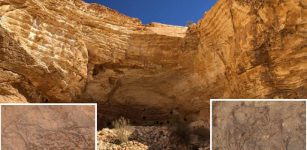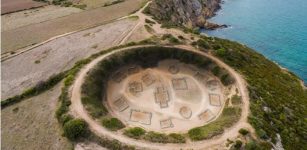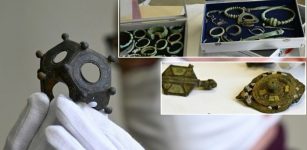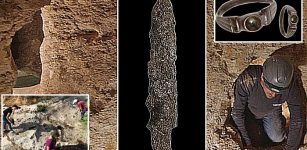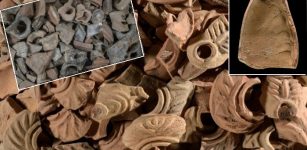Completely Intact 2,000-Year-Old ‘Chocolatier Style’ Pot Discovered In Mexican Cave
Conny Waters - AncientPages.com - Archaeologists have discovered an approximately 2,000-year-old Mayan pot in a cave in Playa del Carmen, Quintana Roo, Mexico.
The National Institute of Anthropology and History (INAH) announced that the 13-centimeter-high “chocolatier style” pot had been dated to the late pre-classic period of 300 B.C. to 250 A.D.
Credit: INAH
Previous studies have confirmed the value of cacao in the region.
As much as modern society worships chocolate, cacao — the plant chocolate comes from — was believed to be even more divine to ancient Mayas. The Theobroma cacao's fermented, roasted, and ground beans can be traced to the Mokaya and other pre-Olmec people, with evidence of chocolate beverages dating back to 1900 B.C.
The Maya considered cacao beans a gift from the gods and even used them as currency because of their value.
"INAH archaeologists José Antonio Reyes Solís and Enrique Terrones González visited a cave on a Playa del Carmen property owned by a religious association after receiving a report on it from biologist and speleologist Roberto Rojo.
Reyes said they found the pot near the eastern wall of the Cueva de la Cruz (Cave of the Cross), where the ceramic relic was partially submerged in sediment. Despite its age, the pot is completely intact, he said.
Image from a Maya ceramic depicting a container of frothed chocolate. A possible Maya lord sits before an individual with a container of frothed chocolate. Source
The ancient vessel was photographed in situ before it was removed using a “meticulous process,” INAH said, noting that it was passed along a human chain to ensure it wasn’t damaged. The relic was subsequently transferred to the Mayan Museum of Cancún, where it was closely inspected and measured. The body of the pot, which has no handles, has a diameter of 16 centimeters, while its mouth, or opening, is slightly wider at 17 cm.
Credit: INAH
Reyes noted that the exterior of the pot is reddish in color while the inside is black. “It’s partially covered by calcium carbonate, which is characteristic of materials recovered in caves,” he said. Reyes added that there is an image of a plant similar to a squash on the pot," Mexico News Daily reports.
Next, scientists plan to examine the cave where the ancient Maya pot was discovered. The goal is to learn more about the people who produced and pot and lived in this area at the time.
See also: More Archaeology News
Archaeologists plan to return to the Cueva de la Cruz during the dry season to search for other artifacts, as the cave tends to fill up with water during the rainy season.
Written by Conny Waters - AncientPages.com Staff Writer








